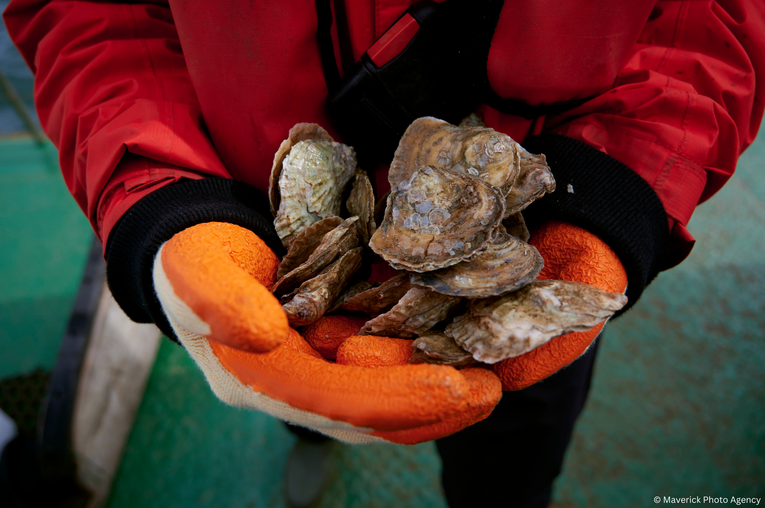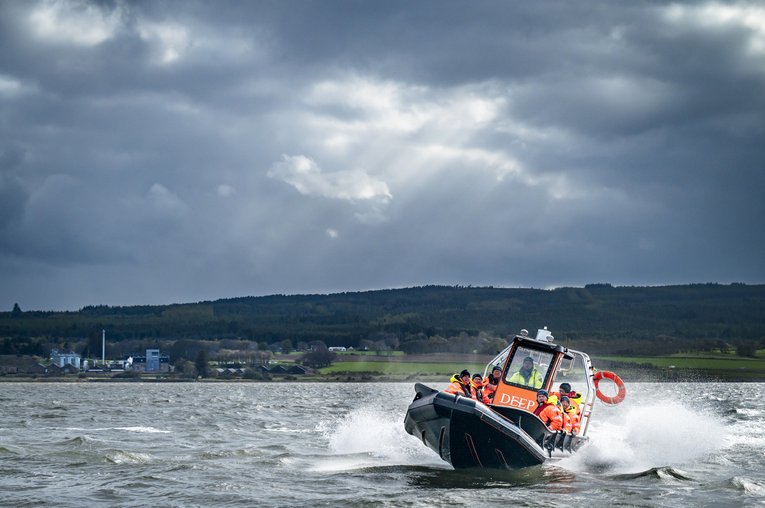
Celebrating our oyster restoration achievements
This month we’re celebrating the success of two of our oyster restoration projects, which will improve water quality, boost biodiversity and carbon storage in Scotland’s coast.
Our seas are teeming with amazing marine life, from colour-changing fish and glow-in-the-dark plankton to carbon-storing seaweed and ancient corals. However, many of these wonderful species are facing threats such as habitat destruction and population decline. We’re working to change this and restore our ocean to its former glory.
After over a decade of conservation and restoration efforts, we’re celebrating the success of our oyster restoration projects which aim to revitalise this key species.

A handful of native oysters about to be reintroduced into Scottish waters
Credit: Maverick Photo Agency
Native oysters, which have existed for thousands for years, were once abundant in our waters, with vast thriving beds along our coastline – some the size of Edinburgh. These vital marine habitats have been almost wiped out over a century ago, as found in studies by Heriot-Watt University.
These ‘ecosystem engineers’ play a crucial role in clarifying the water, which allows sunlight to penetrate deeper so marine plants like seaweed and seagrass can grow. Native oyster beds also offer hiding places for many young fish and shellfish, helping to boost biodiversity, and store carbon absorbed from the environment. We’re therefore delighted to celebrate two key milestones for our oyster restoration work this month.
A decade of oyster restoration work with DEEP
It’s been ten years since we, alongside The Glenmorangie Company and Heriot-Watt University launched the groundbreaking, award-winning Dornoch Environmental Enhancement Project (DEEP). In that time, we’ve reintroduced over 100,000 native oysters to the Dornoch Firth – each of which was cleaned by a team of dedicated volunteers.
"We are absolutely delighted to be a partner of this pioneering project to return native oysters to their rightful place in the Dornoch Firth. In the current climate and nature crises, it’s crucial to accelerate work to help restore what has been lost – but we must do this carefully. DEEP has been a prime example of this, with all native oysters cleaned and returned to appropriate locations within this beautiful Firth."
Calum Duncan, Policy and Advocacy Manager
Continuing our support with Restoration Forth
This careful approach to native oyster “biosecurity”, making sure they are free from disease and non-native species, has also been used in used in multi-partner Restoration Forth project – which we’re also celebrating.
Led by WWF Scotland and supported by Marine Conservation Society, Professor Bill Sanderson and his team at Heriot-Watt University, Restoration Forth aims to reintroduce native oysters to Firth of Forth.

Members of the Restoration Forth volunteer team deploying the oysters into the firth
Credit: Maverick Photo Agency
Within three years of the project, 30,000 native oysters have been reintroduced to the Firth of Forth, with plans for more to come. Our staff and volunteers have been supporting Bill and his team in cleaning and monitoring native oysters for reintroduction at two sites offshore in the Firth of Forth, with the deployment in Autumn 2023 seeing the first native oysters returned to the Forth in a century. Studies have shown the oysters introduced last year have had an impressive 85% survival rate – providing hope for the future of this species.
We couldn’t do this work without the support of our partners and our dedicated volunteers. We're immensely proud to be a key partner in these fantastic projects and look forward to continued reintroductions to reach our target of self-sustaining populations in each of these iconic east coast Firths.




